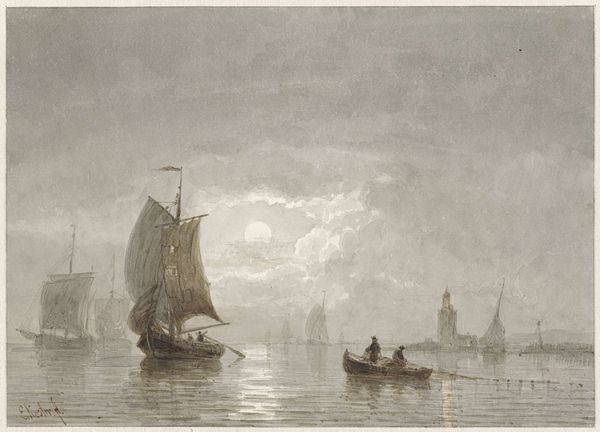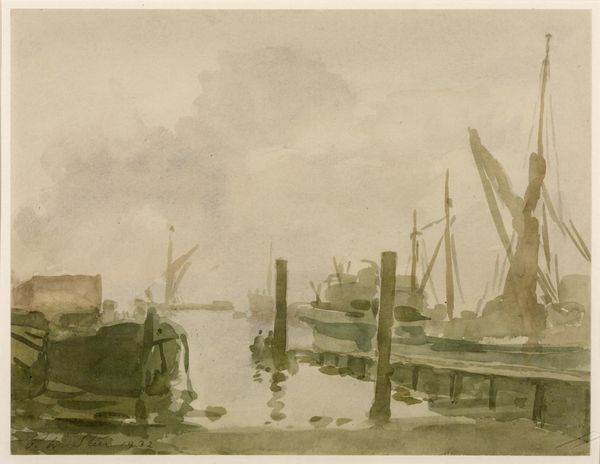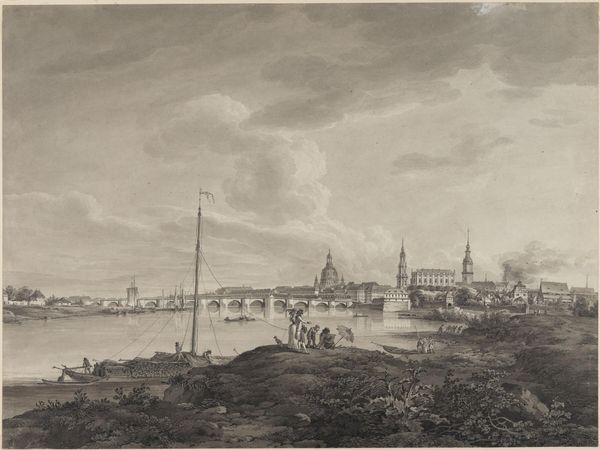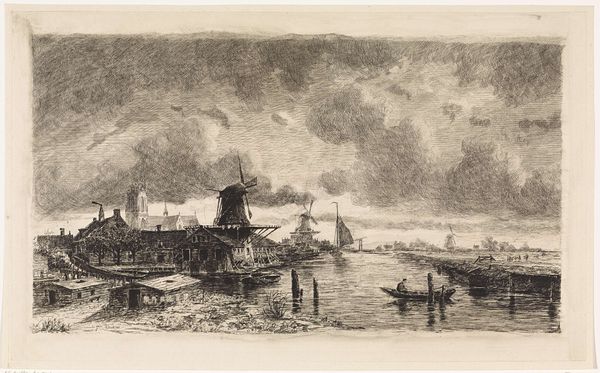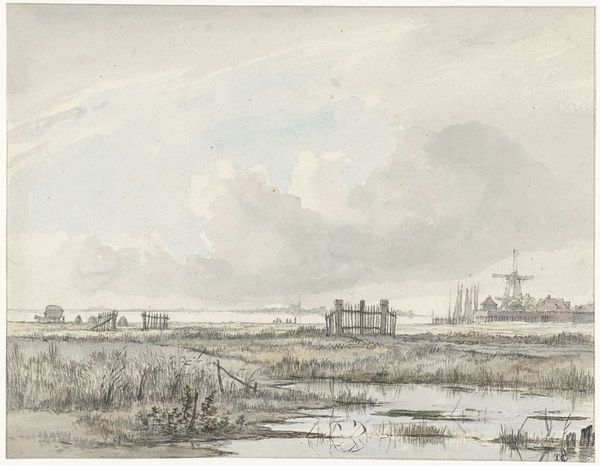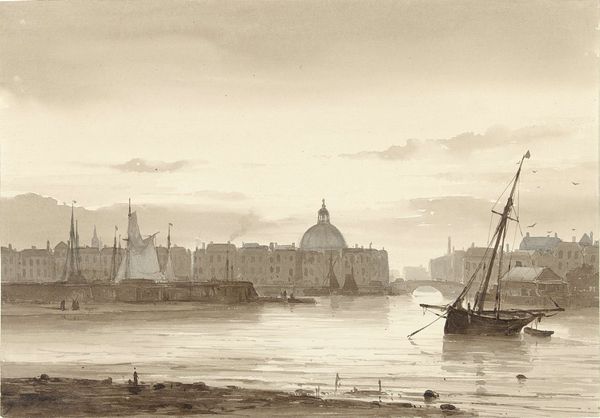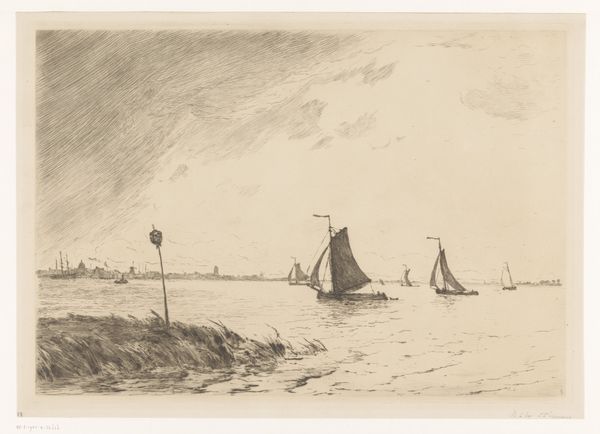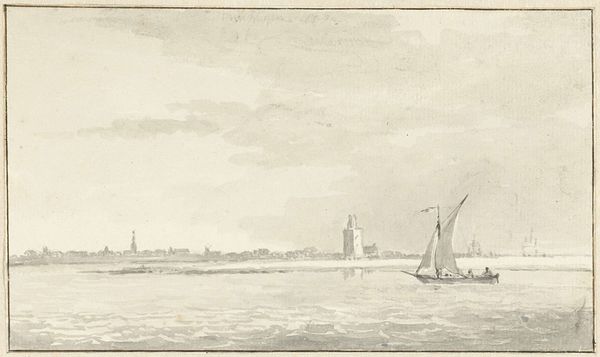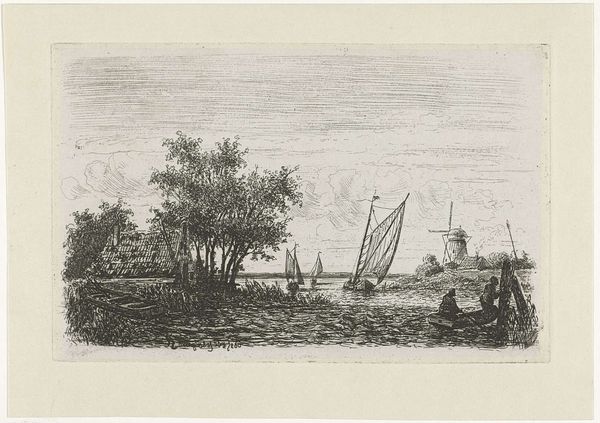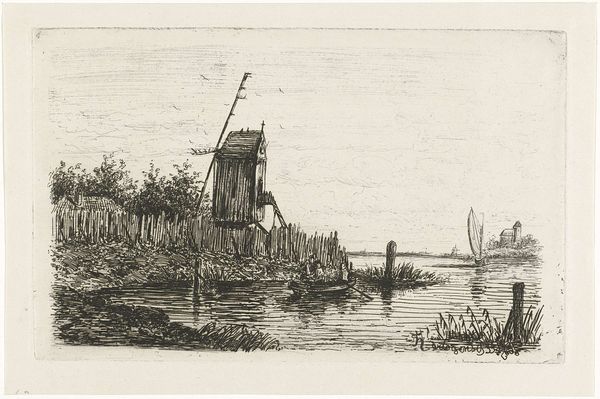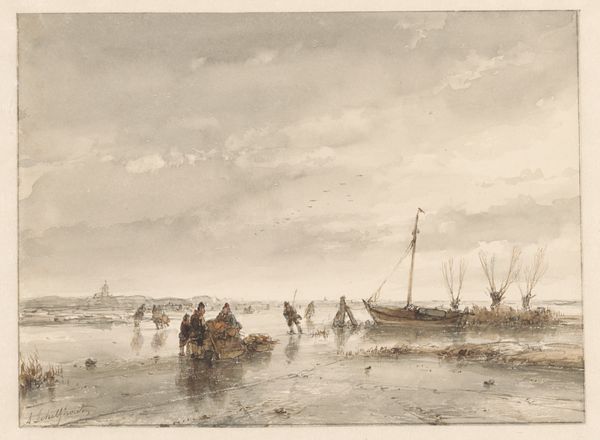
Dimensions: height 172 mm, width 299 mm
Copyright: Rijks Museum: Open Domain
Curator: Here we have Petrus Franciscus Greive's "Gezicht op Veere," created in 1855 using ink on paper. It's a drawing depicting a cityscape in the Netherlands. Editor: It evokes a powerful sense of quiet solitude. The monochromatic palette and soft lines lend it a dreamlike quality, almost as if you're peering through a misty veil at a forgotten age. Curator: Greive was working within the Romantic tradition, which heavily valued capturing a mood through landscape. He expertly used the ink to portray light hitting specific elements such as the water, boats, or a structure in the distance. Editor: I am drawn to that tiny boat – such a classic symbol. It conjures images of journeys, both literal and metaphorical, but also of the human spirit navigating the vastness of existence. The subtle reflection on the water enhances the mirroring of internal emotions with external landscapes, no? Curator: Possibly. More literally, it probably served a specific role within the economic and transportation infrastructure of Veere. Think of the daily life along these waterways; materials and supplies moved by such boats. That detail shows Greive's careful representation of his time. Editor: Certainly. Though I keep returning to the steeple pointing heavenward. This adds a potent layer, contrasting earthly transience, such as figures passing in that tiny boat, with an imagined spiritual transcendence, all reflected on this body of water in turn acting as both dividing line and unifier. Curator: Right, and notice how the paper itself contributes to the artwork’s atmosphere. The slight discolouration of the paper adds to its feeling, evidence of material ageing in parallel to the scene’s history that unfolds. This makes me think of preservation methods and how we consume older artworks today. Editor: And thinking of consumption, in the sense of experiencing artwork like this, allows us access to a long, unbroken stream of imagery and symbolism. The quiet boat crosses space and time connecting us to both that place and that human experience of moving through the world in general. Curator: True. Each medium presents us with certain cultural knowledge about labour, industrial progress and daily needs, doesn’t it? Well, regardless of whether the vessel is physical, it moves ideas! Editor: It does indeed. Looking closer has provided me a whole new appreciation for how timelessness in art is born from the blend of the earthly and symbolic, no matter the medium.
Comments
No comments
Be the first to comment and join the conversation on the ultimate creative platform.
